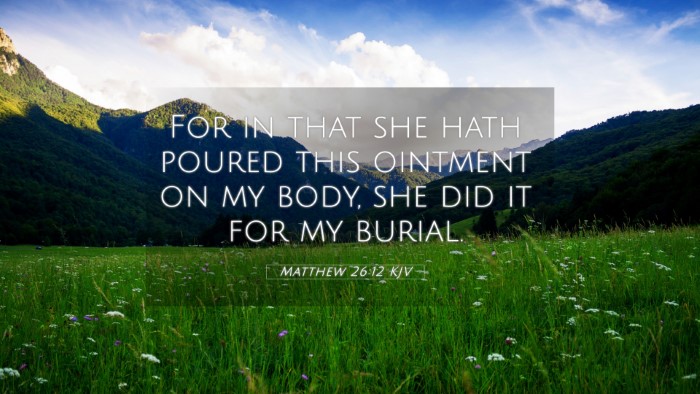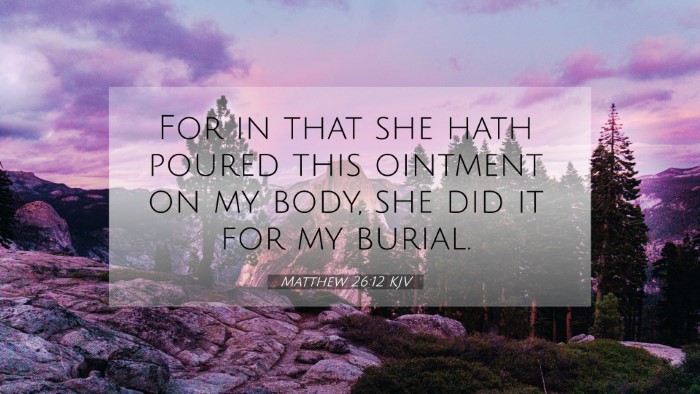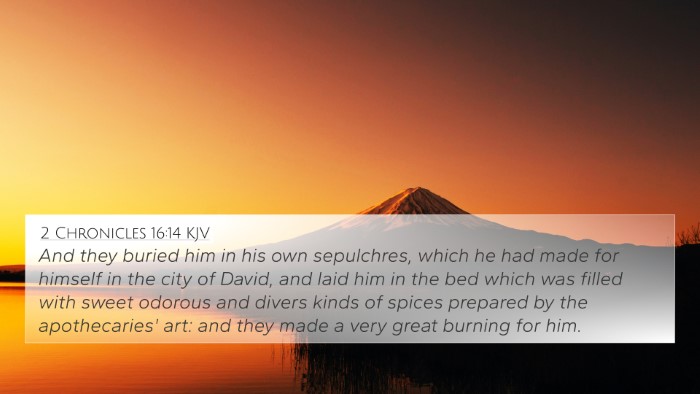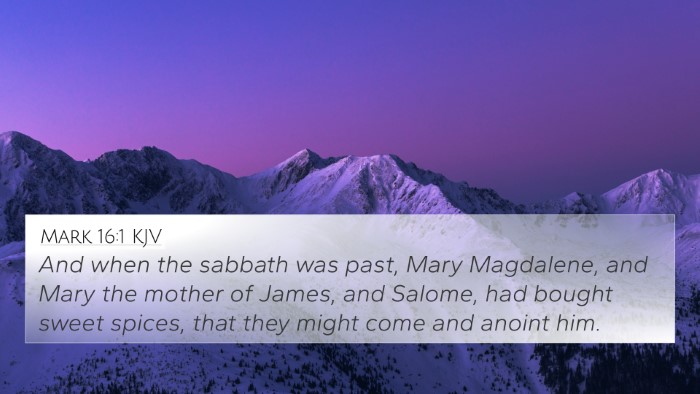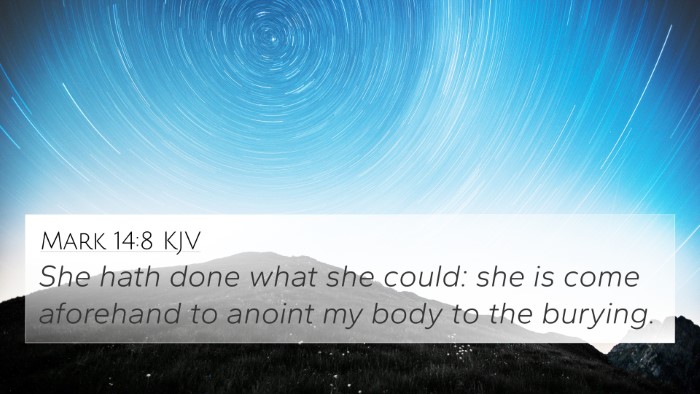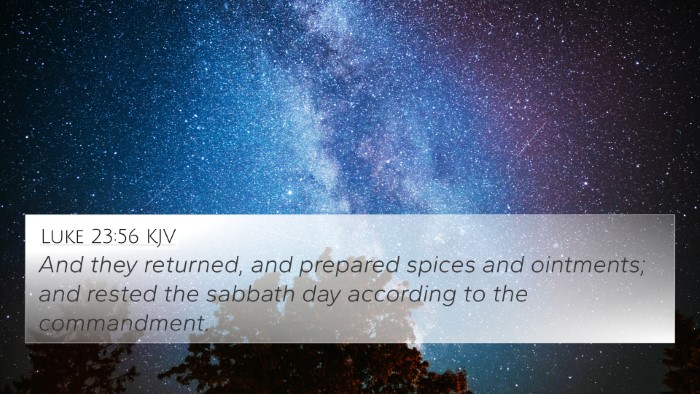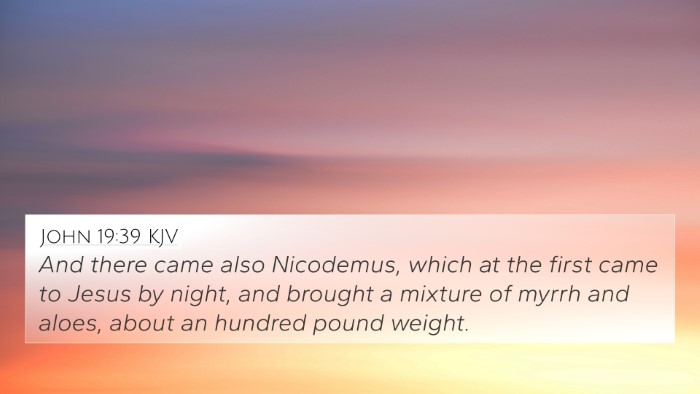Understanding Matthew 26:12
Verse Text: "For in pouring this fragrant oil on My body, she did it for My burial."
Context and Overview
Matthew 26:12 occurs within the narrative of Jesus' final days before His crucifixion. This particular verse highlights a significant act of devotion from a woman who anoints Jesus with precious oil, a gesture that foreshadows His impending burial. This moment encapsulates themes of sacrifice, worship, and the importance of honoring Christ.
Commentary Insights
- Matthew Henry: Henry emphasizes that the woman's act reflects a profound understanding of Jesus’ mission and her desire to honor Him. He notes that such an act was often considered extravagant yet serves as a testament to her faith and recognition of His impending sacrifice.
- Albert Barnes: Barnes points out that the anointing of Jesus symbolizes preparation for His death and burial. He underscores the importance of the act as a prophetic declaration of Jesus' role as the sacrificial lamb, a theme that resonates throughout the Gospels.
- Adam Clarke: Clarke discusses the cultural significance of anointing in biblical times, explaining that oil was used for ceremonial purposes. He interprets the pouring of oil as both a sign of respect and an acknowledgment of Jesus as the Messianic figure.
Thematic Bible Verse Connections
Matthew 26:12 is interconnected with various scripture passages that enhance its understanding. Here are some significant cross-references:
- John 12:3: This parallel account describes the same event, emphasizing Mary’s act of devotion.
- Mark 14:8-9: Mark also recounts the anointing and highlights the significance of this act in relation to Jesus’ teachings about the poor.
- Luke 7:37-38: Another anointing event that reflects similar themes of worship and recognition of Jesus' authority.
- Isaiah 61:1: This Old Testament prophecy speaks of an anointed one, connecting Jesus to His divine mission.
- Matthew 16:21: Jesus’ prediction of His death signifies the importance of understanding the impending events celebrated through anointing.
- Philippians 2:8: This verse underscores Jesus’ humility and willingness to face suffering, which is mirrored in the anointing.
- 1 Peter 2:24: This reference to Christ’s suffering and the bearing of sins connects the theme of burial and sacrifice poignantly.
Inter-Biblical Dialogue
This verse fosters a rich inter-Biblical dialogue regarding themes of sacrifice and worship:
- The act of anointing in Matthew 26:12 resonates with the Old Testament practice of anointing kings, presenting Jesus as the ultimate King.
- Comparatively, engaging with the Gospels reveals a consistent message regarding the acknowledgment of Christ's authority and the necessity of acting in faith.
- The overarching themes of burial and resurrection found in Matthew 26:12 echo throughout the New Testament, inviting further exploration of how Christ’s death was a fullfillment of Old Testament prophecy.
Tools for Bible Cross-Referencing
For those looking to delve deeper into the connections between Bible verses, consider the following:
- Bible Concordance: An essential tool for locating specific verses and their thematic connections.
- Bible Cross-Reference Guide: Provides guidance on passages that correlate with one another.
- Cross-Reference Bible Study: A method that encourages readers to compare related scriptures and enrich their biblical understanding.
Conclusion
The exploration of Matthew 26:12 through the insights of Matthew Henry, Albert Barnes, and Adam Clarke, reveals the verse's profound significance in Christ's ministry. By cross-referencing related verses and understanding the broader biblical context, one can appreciate the layers of meaning in this poignant moment of anointing, which not only foretells Jesus' burial but also highlights the essential themes of faith, sacrifice, and devotion. For anyone seeking to understand Bible verses and their meanings, Matthew 26:12 serves as a pivotal study point, enriching one's faith and comprehension of scripture.

